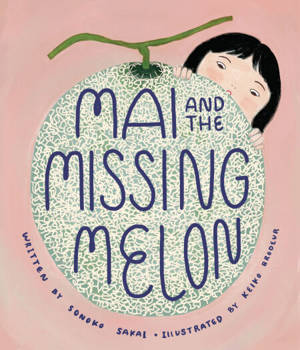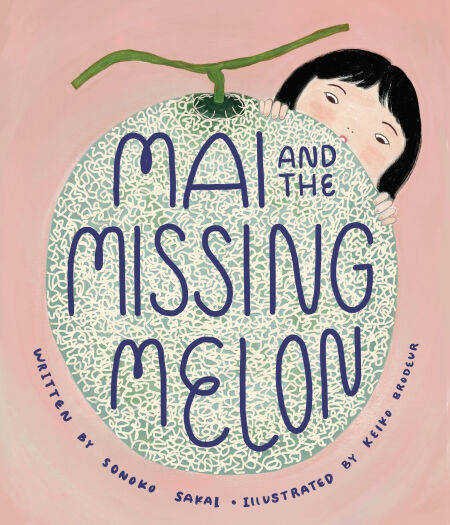
- Afhalen na 1 uur in een winkel met voorraad
- Gratis thuislevering in België vanaf € 30
- Ruim aanbod met 7 miljoen producten
- Afhalen na 1 uur in een winkel met voorraad
- Gratis thuislevering in België vanaf € 30
- Ruim aanbod met 7 miljoen producten
Omschrijving
2023 Freeman Book Awards “Of Note” title in Children's Literature
An exploration of Japanese food, culture, and history that celebrates the special relationship between a child, her grandmother, and the power of kindness, for kids 3-7, by the author of Japanese Home Cooking, Sonoko Sakai.
This charming story invites the reader on a journey through rural 1960s Japan following a little girl named Mai on the Enoden train, past the oceanside populated with fishers, and to the classic shrine-like home of her grandmother, or obachama.
Loosely based on an event in Sonoko’s childhood, Mai wishes to share the gift of a sweet muskmelon with her grandmother but loses it on the train along the way. Obachama shares the Japanese folktale of The Stone Buddhas as an example of the power of good intentions to cheer Mai up.
After the story, Mai hears from the train station master that the melon has been found, and she and her obachama are able to enjoy the sweet muskmelon together.
This sweet story explores the cherished relationship between a young girl and her grandmother–two great friends despite the age gap–while the expressive art takes the reader through the Japanese countryside, past the sea, bamboo forests, and temples, drawn from the author’s own childhood memories.
An exploration of Japanese food, culture, and history that celebrates the special relationship between a child, her grandmother, and the power of kindness, for kids 3-7, by the author of Japanese Home Cooking, Sonoko Sakai.
This charming story invites the reader on a journey through rural 1960s Japan following a little girl named Mai on the Enoden train, past the oceanside populated with fishers, and to the classic shrine-like home of her grandmother, or obachama.
Loosely based on an event in Sonoko’s childhood, Mai wishes to share the gift of a sweet muskmelon with her grandmother but loses it on the train along the way. Obachama shares the Japanese folktale of The Stone Buddhas as an example of the power of good intentions to cheer Mai up.
After the story, Mai hears from the train station master that the melon has been found, and she and her obachama are able to enjoy the sweet muskmelon together.
This sweet story explores the cherished relationship between a young girl and her grandmother–two great friends despite the age gap–while the expressive art takes the reader through the Japanese countryside, past the sea, bamboo forests, and temples, drawn from the author’s own childhood memories.
Specificaties
Betrokkenen
- Auteur(s):
- Illustrator(s):
- Uitgeverij:
Inhoud
- Aantal bladzijden:
- 32
- Taal:
- Engels
Eigenschappen
- Productcode (EAN):
- 9780834845329
- Verschijningsdatum:
- 23/10/2023
- Uitvoering:
- E-book
- Beveiligd met:
- Adobe DRM
- Formaat:
- ePub 3 Fixed Layout

Alleen bij Standaard Boekhandel
+ 18 punten op je klantenkaart van Standaard Boekhandel
Beoordelingen
We publiceren alleen reviews die voldoen aan de voorwaarden voor reviews. Bekijk onze voorwaarden voor reviews.










